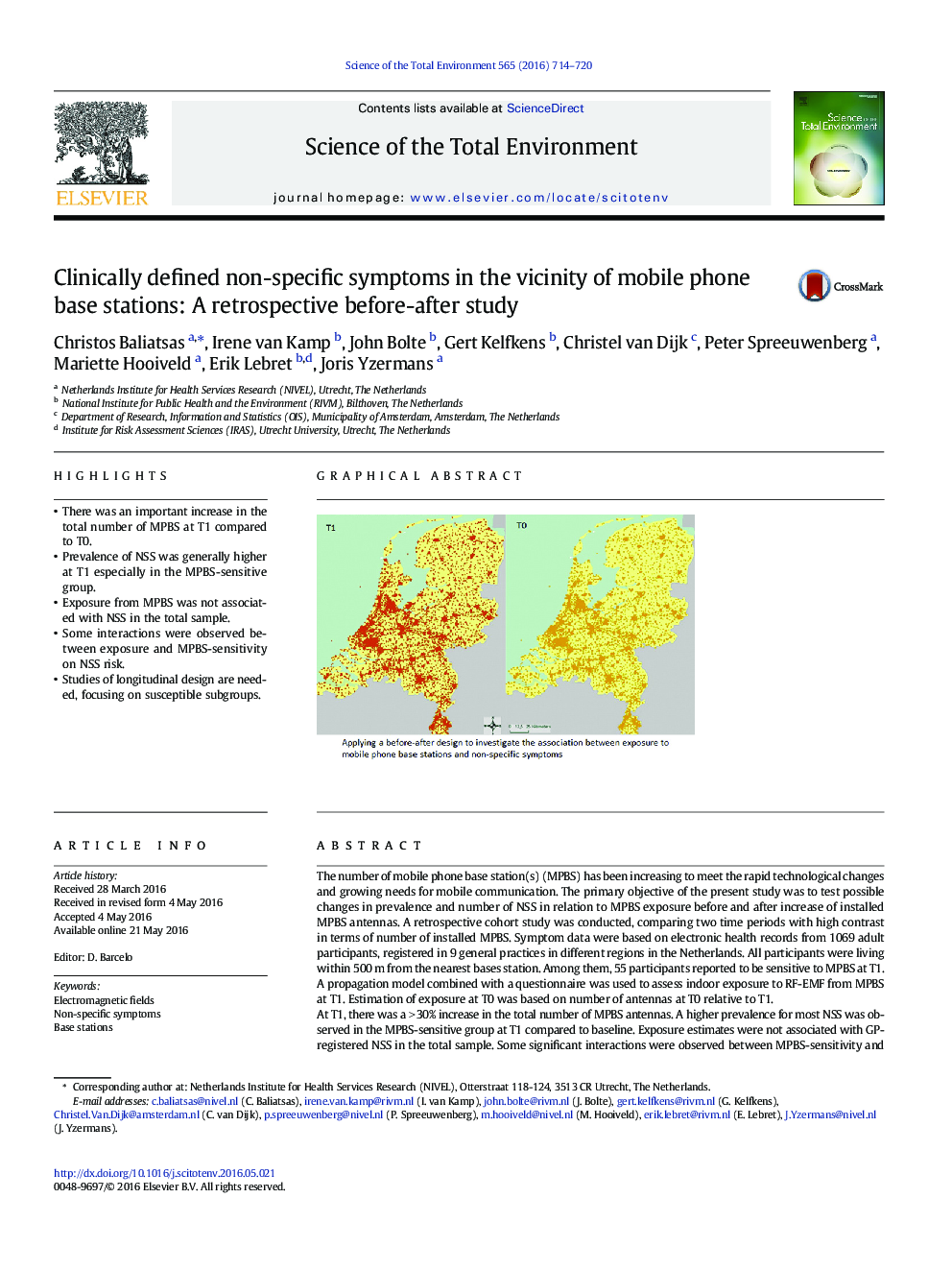| Article ID | Journal | Published Year | Pages | File Type |
|---|---|---|---|---|
| 6322125 | Science of The Total Environment | 2016 | 7 Pages |
â¢There was an important increase in the total number of MPBS at T1 compared to T0.â¢Prevalence of NSS was generally higher at T1 especially in the MPBS-sensitive group.â¢Exposure from MPBS was not associated with NSS in the total sample.â¢Some interactions were observed between exposure and MPBS-sensitivity on NSS risk.â¢Studies of longitudinal design are needed, focusing on susceptible subgroups.
The number of mobile phone base station(s) (MPBS) has been increasing to meet the rapid technological changes and growing needs for mobile communication. The primary objective of the present study was to test possible changes in prevalence and number of NSS in relation to MPBS exposure before and after increase of installed MPBS antennas. A retrospective cohort study was conducted, comparing two time periods with high contrast in terms of number of installed MPBS. Symptom data were based on electronic health records from 1069 adult participants, registered in 9 general practices in different regions in the Netherlands. All participants were living within 500Â m from the nearest bases station. Among them, 55 participants reported to be sensitive to MPBS at T1. A propagation model combined with a questionnaire was used to assess indoor exposure to RF-EMF from MPBS at T1. Estimation of exposure at T0 was based on number of antennas at T0 relative to T1.At T1, there was a >Â 30% increase in the total number of MPBS antennas. A higher prevalence for most NSS was observed in the MPBS-sensitive group at T1 compared to baseline. Exposure estimates were not associated with GP-registered NSS in the total sample. Some significant interactions were observed between MPBS-sensitivity and exposure estimates on risk of symptoms. Using clinically defined outcomes and a time difference of >Â 6Â years it was demonstrated that RF-EMF exposure to MPBS was not associated with the development of NSS. Nonetheless, there was some indication for a higher risk of NSS for the MPBS-sensitive group, mainly in relation to exposure to UMTS, but this should be interpreted with caution. Results have to be verified by future longitudinal studies with a particular focus on potentially susceptible population subgroups of large sample size and integrated exposure assessment.
Graphical abstractDownload high-res image (318KB)Download full-size image
